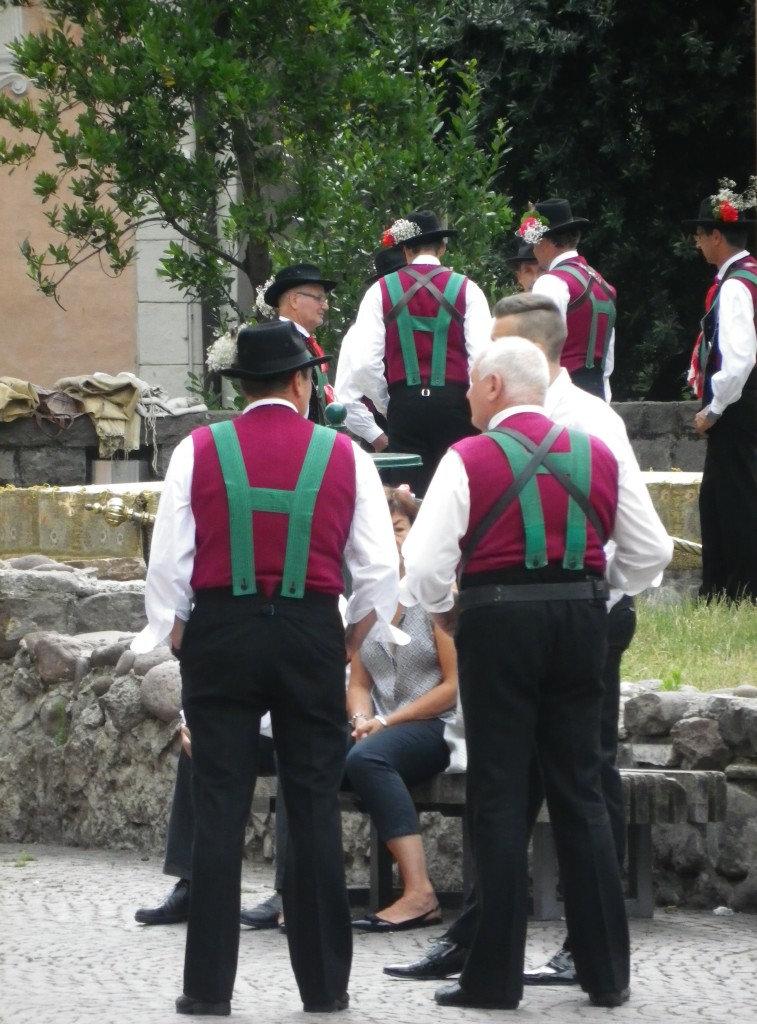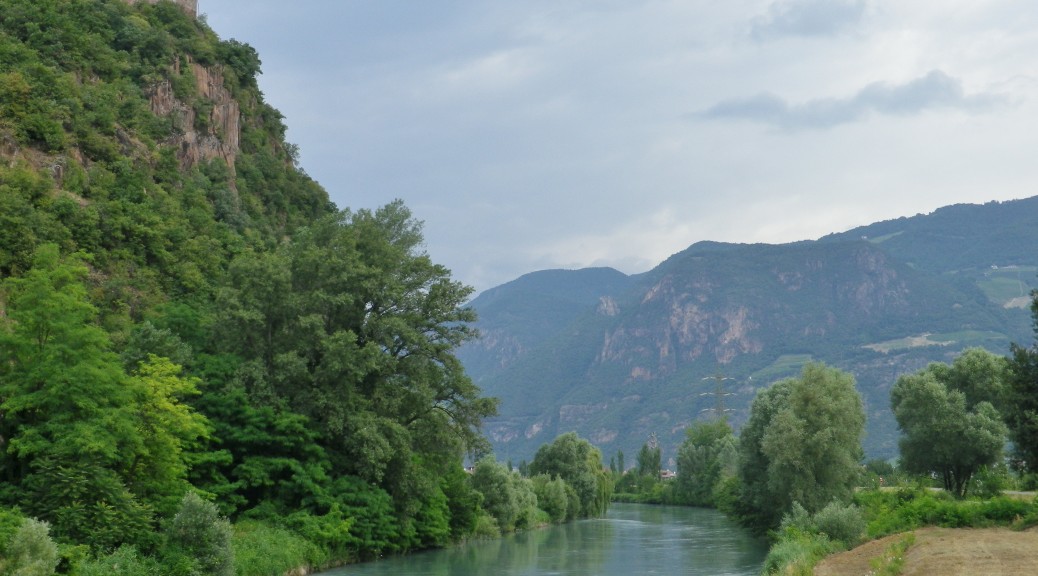The Alto Adige is Italy’s name for the province beginning north of Trento, and continuing north to the Austrian border. Formerly a part of Austria, this bilingual region has another name for itself: the Suedtirol (South Tirol). In this area, grapes grow on the sunny side of the Dolomites mountains. To highlight its wine-making culture, landscape and traditions, the region has developed three biking circuits that allow wine-enthusiast bicyclists to explore this beautiful area.
Bozen (known as Bolzano in Italian) is the capital of the Suedtirol region. If it also identified itself the capital of bike-friendly cities in all of Italy, I would not disagree. It has an extensive network of bike paths. These are beautifully designed, and include bridges over the numerous waterways that crisscross and surround the city. The bike paths also extend for miles into the neighboring valleys, and well-placed signs direct the way to various towns or sites from Bozen’s center.
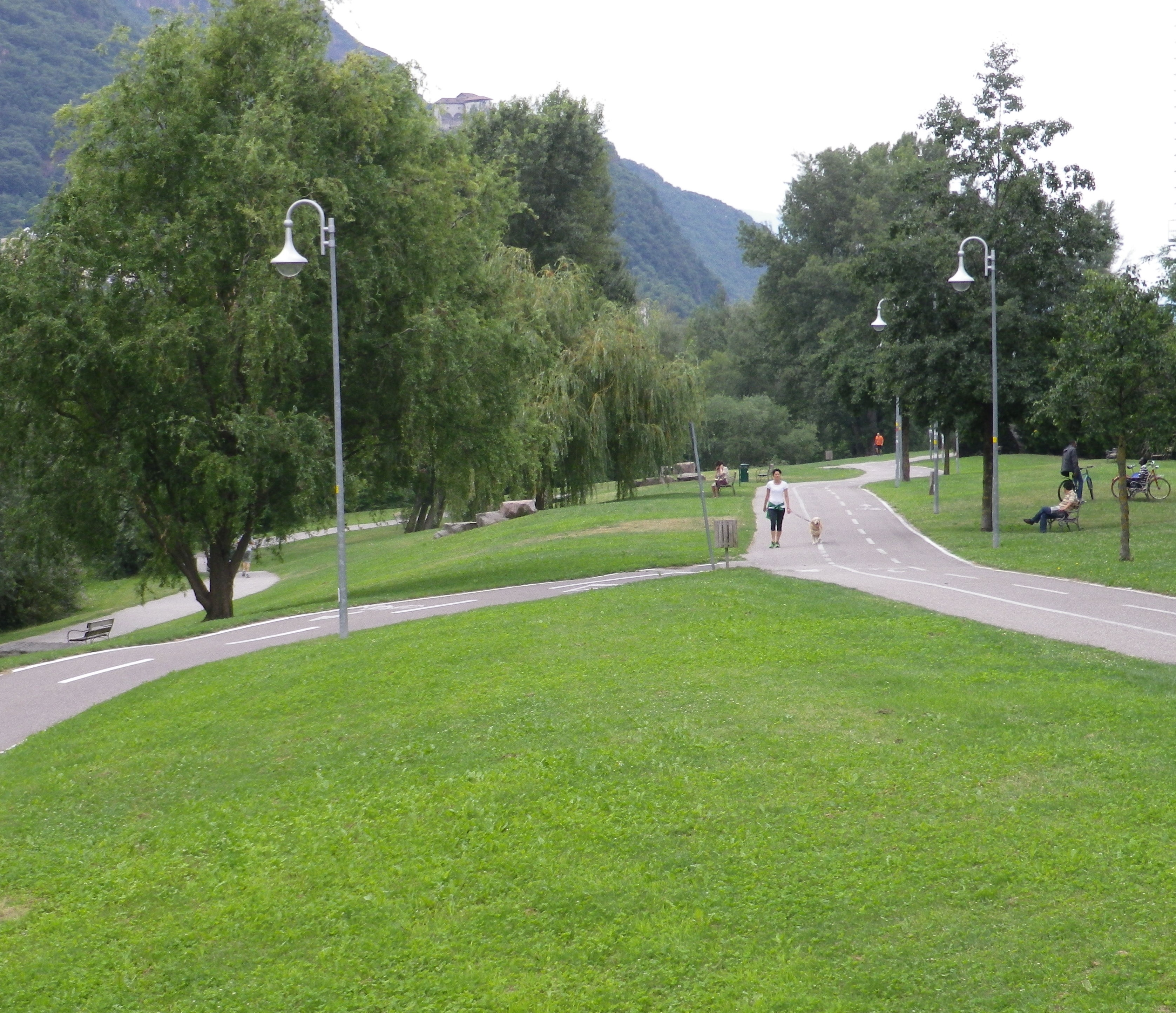
The Northern Wine Route of the South Tyrolean Wine Road, designed to highlight the cultivated areas of the native Lagrein grape, and the Sauvignon grape, begins in the heart of the historic center of Bozen: Waltherplatz. I had a difficult time riding away from here. In part because I couldn’t find the sign leading out of the large central square, (and within a couple hundred yards found myself (wrongly) at the conveniently located train station), but also because the square itself was so attractive. It is surrounded by pastel-colored buildings, and their graceful arcades, an intriguing patterned roof covering a graceful, gothic-style church, and a central fountain surrounded by an explosion of blooming flowers. From the middle of the square, the steep, green-covered mountainsides seem to drop right down into it. Such a beautiful space invites visitors, and it was bustling with people, many enjoying the scene from the cafes. After taking some photos, and consulting the map once again, I made my way out of the center by way of the front of the church.
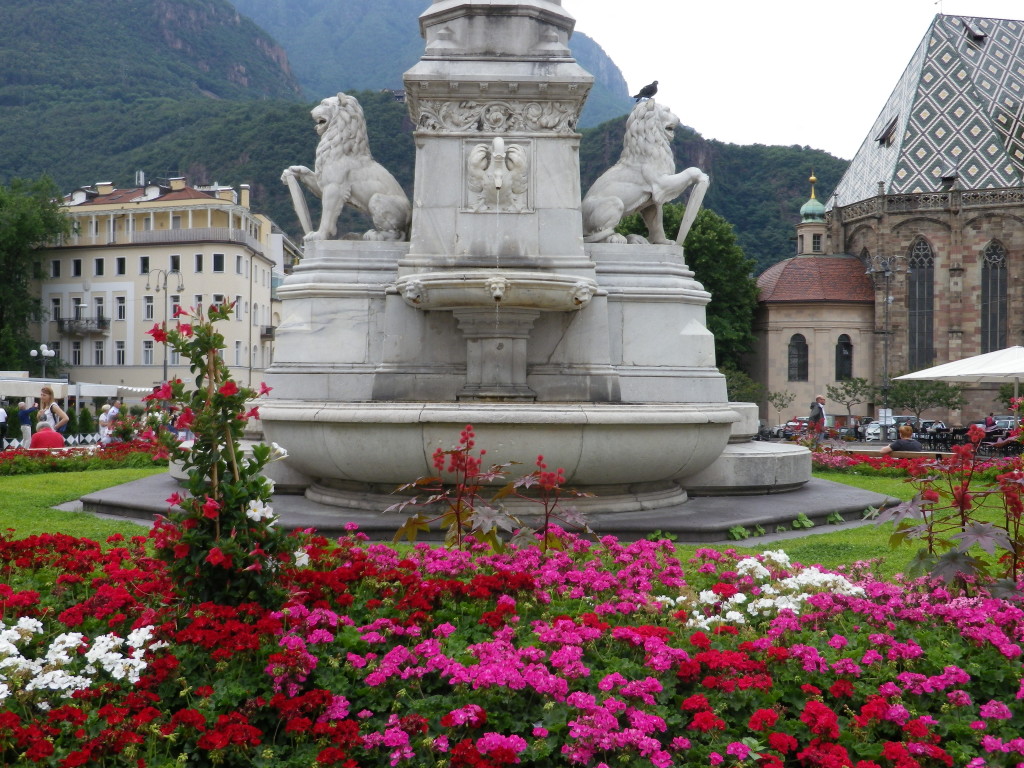
Following the Eisack River (the Isarco, in Italian), the trail led to the small community of Kardaun, where it turned almost 180 degrees upon itself. Pedaling along vine-covered mountainsides led to Rentsch, a picturesque wine village, and from there to a beautiful path in a park along the Talfer River. Upstream, I noticed the Jenesier cable car station, leading to the top of the surrounding mountains. I was tempted to take a ride to the summit to view the magnificent Dolomites from above.
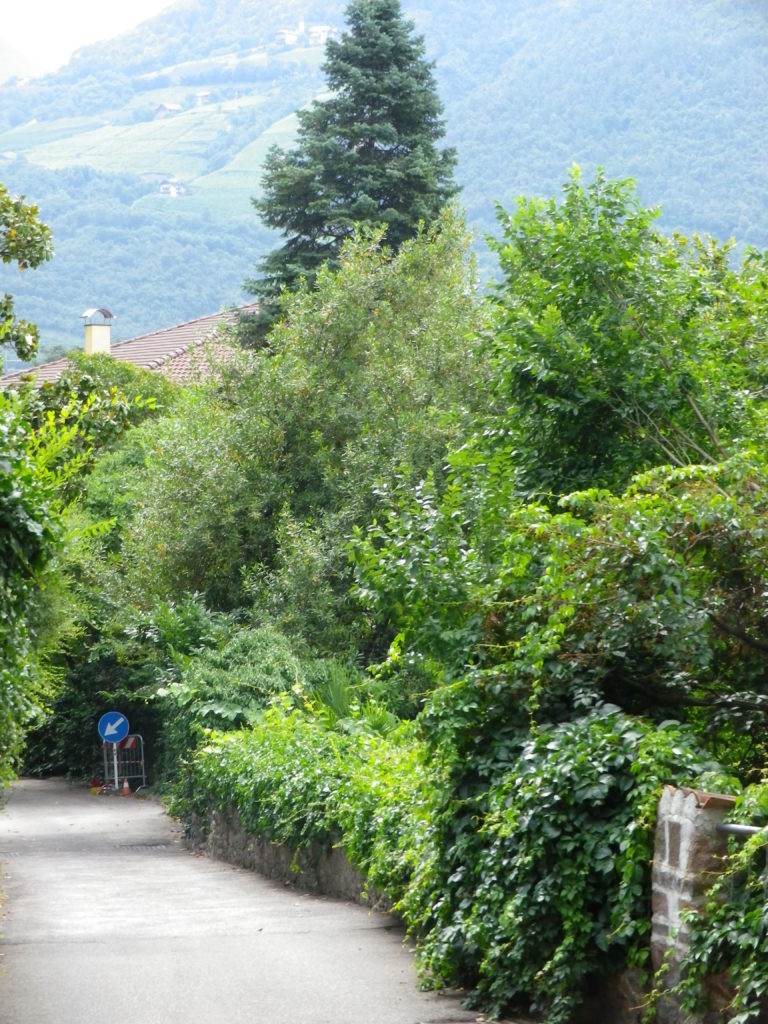
Instead, I rode into Gries, which is home to the medieval Abbey (and wine cellars and wine bar) of Muri-Gries. It still functions as an abbey, and the abbot, to quote from its website, believes in “wine, which cheers up people’s spirits.” The trail leads right to it. Not surprisingly, the wine bar was closed on a Sunday though.
The trail continues by following up the valley of the Etsch (Adige) River on the road to San Maurizio, and from there to Terlan. The route did not follow a bike path here, as the intent is to see the vineyards and cellars. In fact, the wine route leads past the Von Braunbach winery, a sparkling wine producer, and very close to the Terlan Winery (Kellerei Terlan).
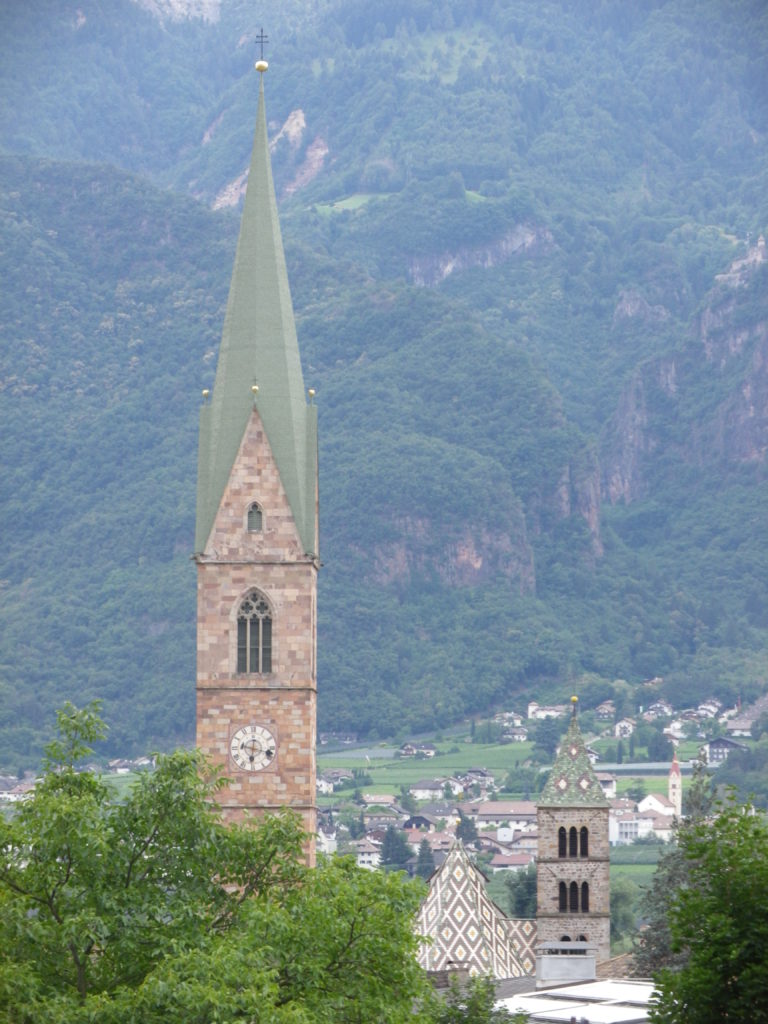
After Vilpian, the trail crosses the Etsch, and begins its descent down the river valley. A series of villages on the west side of the valley wait to be discovered. Picturesque Nals, then Andrian, a charming village with its own winery the trail literally runs into, and just outside that village, the trail traces along a massive cliff-face to the village of Frangart.
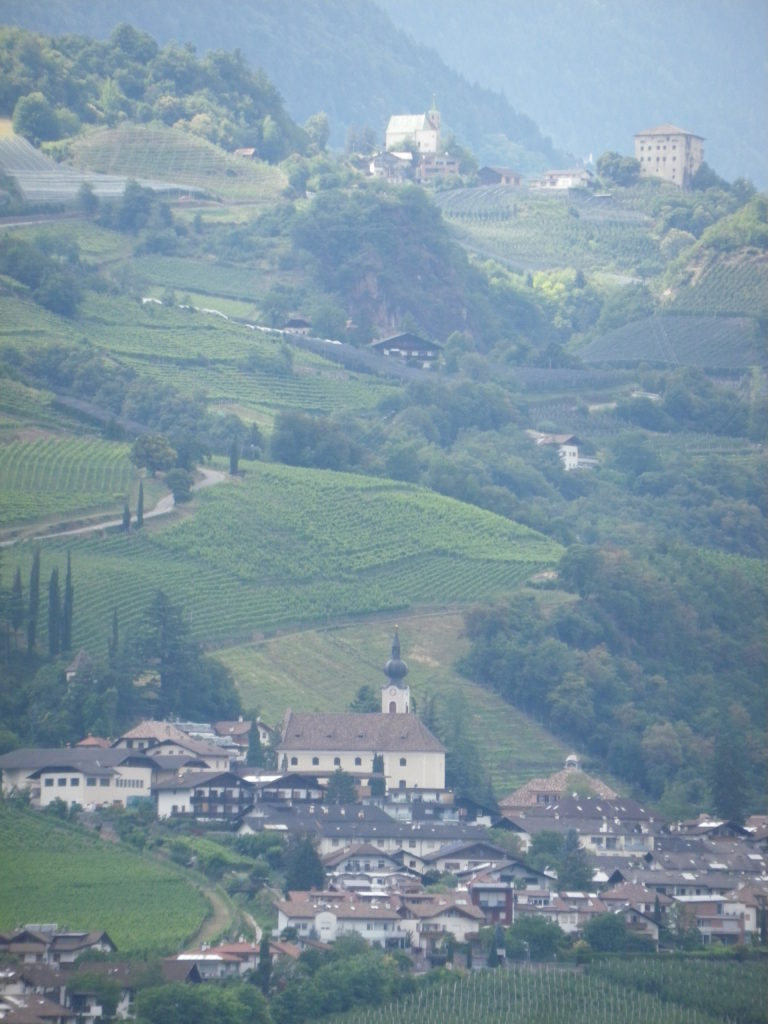
The literature on the trail exclaims that the trail leads up to the Firmian castle in Frangart. Perched high above the town and the Etsch River, that would present a biking challenge. Actually, the trail circles around it, following the Etsch through a lovely green space, before crossing to the Eisack River bank, and heading through a long green section of bike trail toward Bozen.
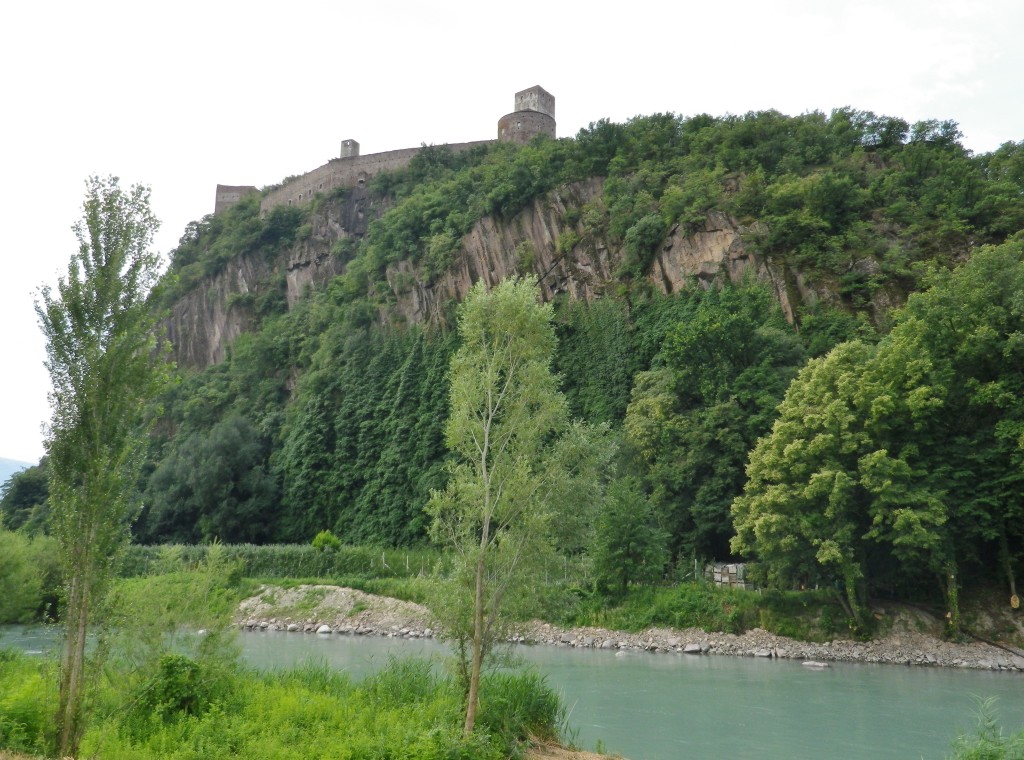
Once past the Druso Stadium, the path follows the Talfer River again. At this point, I lost track of the rivers and streams I had crossed. Being in an Alpine area, there is an abundance of them, and the trail seems to cross them all at least once! But that minor complaint aside, they make for wonderful, green pathways. They are biking arteries to the center of Bozen, reached via yet another cycle and pedestrian bridge, not far from the Archeological Museum. It is famous as home to Oetzi, a 5000 year old well-preserved man discovered in a nearby glacier a couple of decades ago.
The trail ends where it begins: in Waltherplatz. Even more people had gathered there, as a holiday celebration began in the church with wonderful music, and colorful regional costumes – and it was time to enjoy the sights and sounds, accompanied by some South Tyrolean Lagrein wine.
